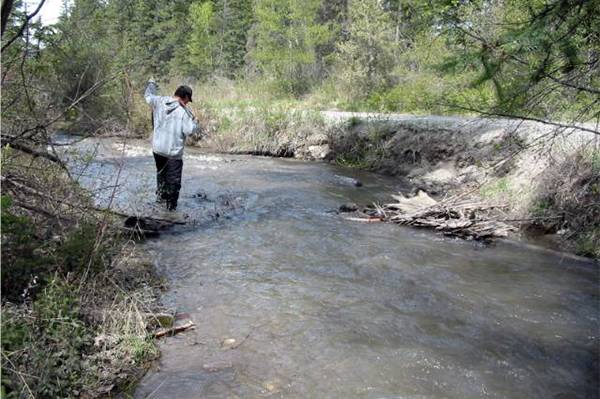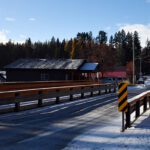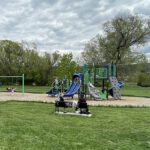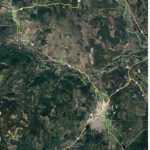Home »

Five habitat projects receive nearly $1.85 million from Trust
Habitat such as wetlands and creeks, and animals such as elk and bull trout will benefit from five multi-year projects that are restoring over 1,700 hectares of important land thanks to community efforts and Columbia Basin Trust’s Ecosystem Enhancement Program.
 The five-year, $10-million program helps groups undertake projects to maintain and improve ecological health and native biodiversity in a variety of ecosystems. Through the program, the Trust seeks project ideas from community organizations and helps bring the projects to fruition. These five new projects are in addition to five projects supported earlier this year that are restoring 3,800 hectares of habitat near Creston and in the southern portion of the Rocky Mountain Trench.
The five-year, $10-million program helps groups undertake projects to maintain and improve ecological health and native biodiversity in a variety of ecosystems. Through the program, the Trust seeks project ideas from community organizations and helps bring the projects to fruition. These five new projects are in addition to five projects supported earlier this year that are restoring 3,800 hectares of habitat near Creston and in the southern portion of the Rocky Mountain Trench.
“People in the Columbia Basin told us they value healthy, diverse and functioning ecosystems and they want us to support large-scale habitat restoration across the Basin,” said Tim Hicks, Senior Manager, Delivery of Benefits. “By supporting in-depth ecosystem projects over the long-term, we can help make a meaningful and measurable difference to these areas and the plants and animals that live in them.”
The five new projects, receiving nearly $1.85 million, focus on the Arrow/Slocan region and Columbia Valley region.
Restoring the Forest to Expand the Possibilities – $401,200

The ʔakisq̓nuk First Nation will restore and enhance 115 hectares of land over two years, which will connect to over 300 hectares it has already treated. The project will involve employing and engaging with community members and others to thin dense stands of small-diameter Douglas fir. This will restore critical habitat for species like the at-risk American badger and Rocky Mountain bighorn sheep, help lower the risk of catastrophic wildfires and reduce weed infestations.
“The plan for treatment is to create a mosaic of habitat types that will primarily follow the historic stand structure of an open forest,” said Andrew Malucelli, Natural Resource Manager, ʔakisq̓nuk First Nation. “It will enhance the health and vigour of the ecosystem, especially critical winter range for ungulates like deer and elk.”
Collaborating to Restore a Watershed – $350,000
At-risk species like westslope cutthroat trout, bull trout and burbot live in Shuswap Creek. Over four years, the Shuswap Indian Band will restore and enhance over five kilometres of this 18-km creek. A key aspect will be to collaborate with community members, local landowners and local and provincial organizations while using a scientific and effective approach to restoring watersheds.
“We will transfer knowledge while employing First Nations members and community residents, and will know the project has been successful when we see positive trends in aquatic communities and populations,” said Mark Thomas, Councillor, Shuswap Indian Band. “Our commitment is to the long-term sustainability of the resources and people of the Columbia Valley.”
Enhancing Wetlands and the Habitats They Provide – $232,800
The Bonanza Biodiversity Corridor, which runs from Summit Lake to Slocan Lake, is host to the highest concentration of wetlands in the Slocan Lake watershed and supports a wide range of species and habitats, including several identified Species at Risk.

Over the next three years, the Slocan Lake Stewardship Society (SLSS) will restore and enhance three key stretches of marshes, fens and swamps along Bonanza Creek to improve water connectivity and the overall health of sensitive aquatic and terrestrial habitats.
“The wetlands targeted in this project are vitally important to the corridor,” said Wendy King, Director, SLSS. “These enhancements will be specifically designed to improve the overall hydrology, thereby providing long-term ecological benefits to Bonanza Creek, its tributaries and its wetlands.”

Creating More and Better Habitat for ki?lawna? (Grizzlies) – $263,500
The Okanagan Nation Alliance (ONA), in partnership with the Penticton Indian Band, will be undertaking a four-year project to enhance ki?lawna? (grizzly bear) habitat on approximately 400 hectares west of Arrow Lakes Reservoir. ONA biologists and technical staff will work along side Sylix communities to support a collaboration between First Nations, local industry, provincial representatives and grizzly bear and wildfire experts that will enhance key ki?lawna? habitat through innovative and improved forestry practices through activities like prescribed burns, brushing and selective harvesting. They’ll also explore managing roads that access sensitive areas, where possible.
“The goal of this project is to increase the availability of important habitat and enhance the value of capable but currently unsuitable habitat,” said Cailyn Glasser, Wildlife Biologist, ONA.
Targeting Dry Slopes, With Benefits Now and in the Future – $600,000

South-facing slopes in the Winlaw Creek and Trozzo Creek watersheds are home to dry, forest habitat that is rare in the West Kootenay. By introducing controlled burns, the Slocan Integral Forestry Cooperative (SIFCo) will improve over 870 hectares of habitat for animals that rely on these areas, from elk and cougar to alligator lizards. The three-year project also involves enhancing rainbow and bull trout habitat on the lower reaches of Winlaw Creek.
“The dry slopes are a rare habitat type in the Slocan Valley and are part of a regionally significant habitat corridor,” said Stephan Martineau, Manager, SIFCo. “This work will improve general ecosystem health and resiliency. It will also provide a source of dry-site plant and animal species that can move into transitioning ecosystems, since dry areas are expected to expand as climate change progresses.”
The Trust identifies projects by seeking input from community groups, First Nations representatives, government and subject matter experts, and reviewing regional plans and research. The Trust works with organizations to initiate and/or support the selected projects, focusing on two sub-regions during each year of the program. It is currently reviewing potential project opportunities in the Lower Columbia and Elk Valleyregions. Learn more at ourtrust.org/ecosystems.
Columbia Basin Trust supports the ideas and efforts of the people in the Columbia Basin. To learn more about the Trust’s programs and initiatives, and how it helps deliver social, economic and environmental benefits to the Basin, visit ourtrust.org or call 1-800-505-8998.
Lead image: The Shuswap Indian Band will restore and enhance over five kilometres of Shuswap Creek with support from Columbia Basin Trust’s Ecosystem Enhancement Program. Photos courtesy Columbia Basin Trust
Columbia Basin Trust







